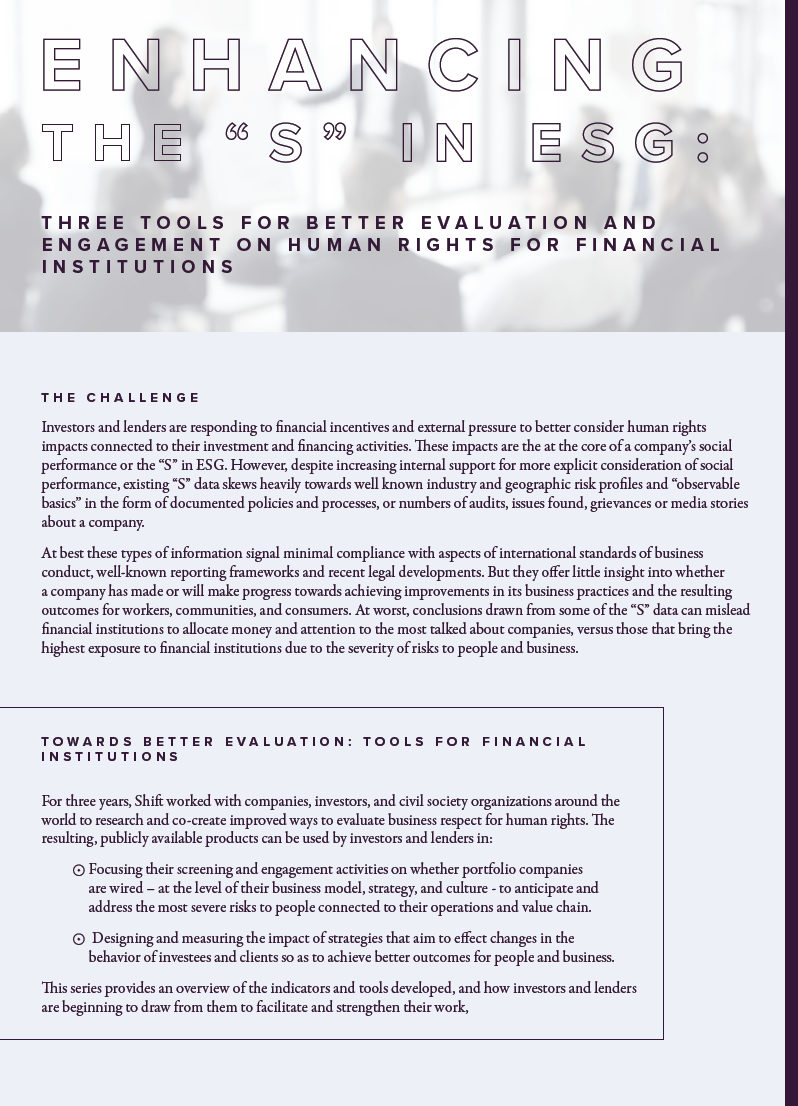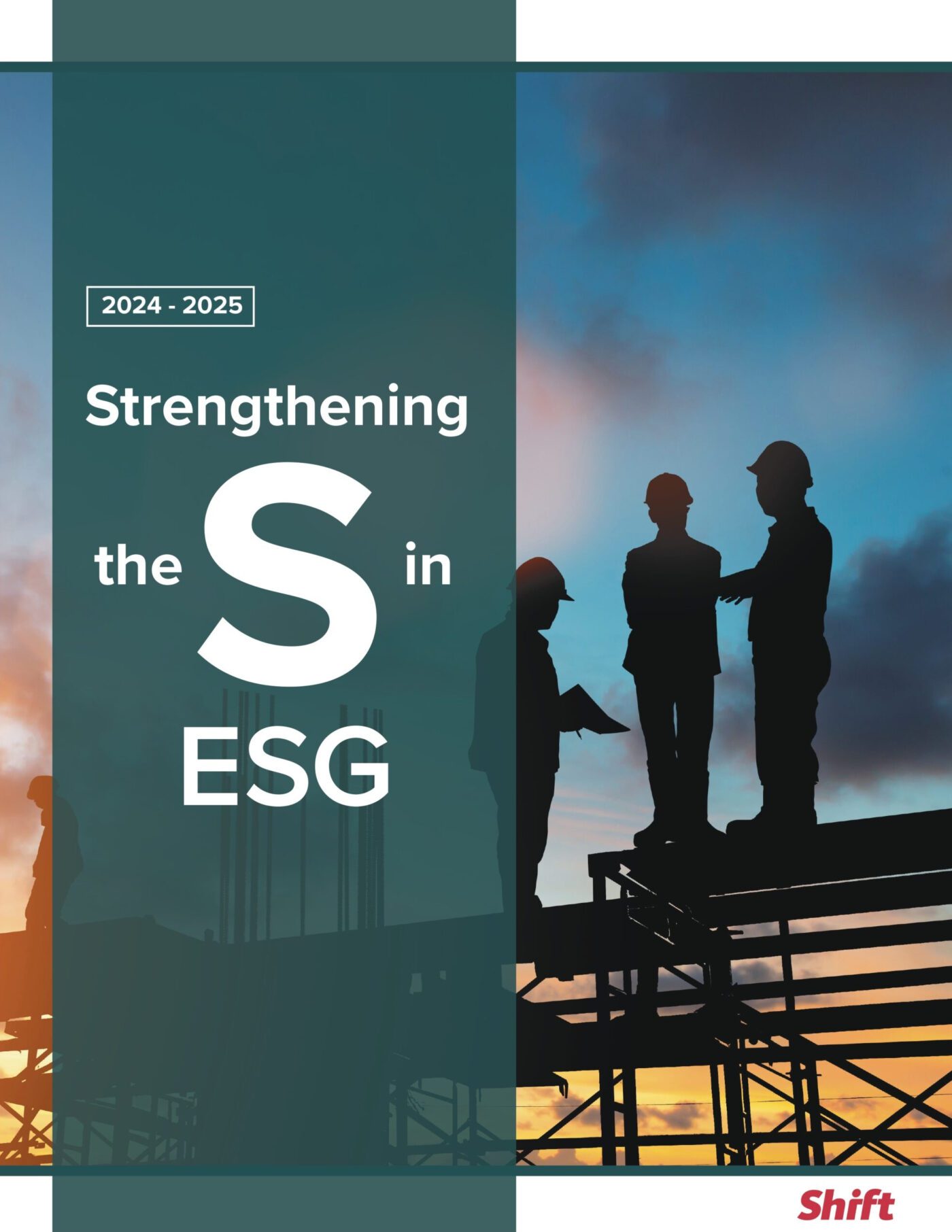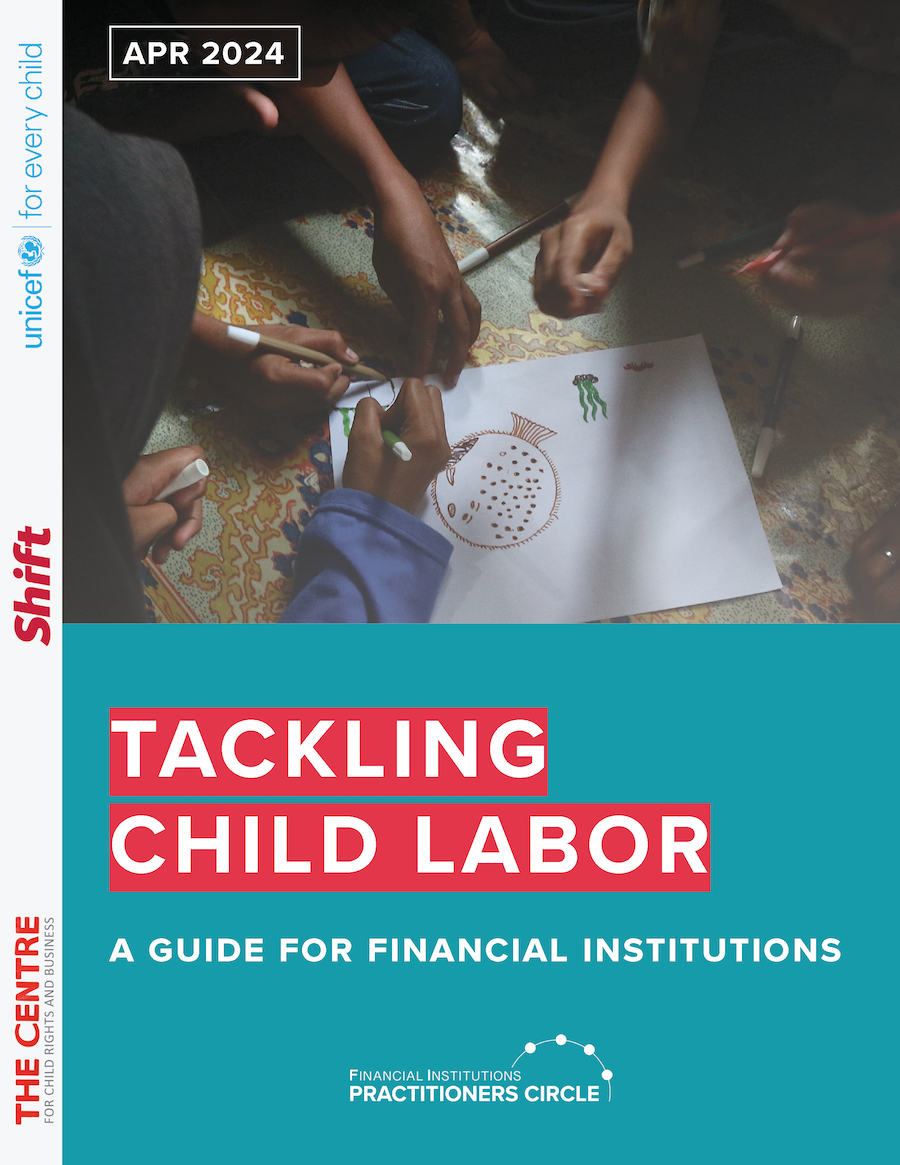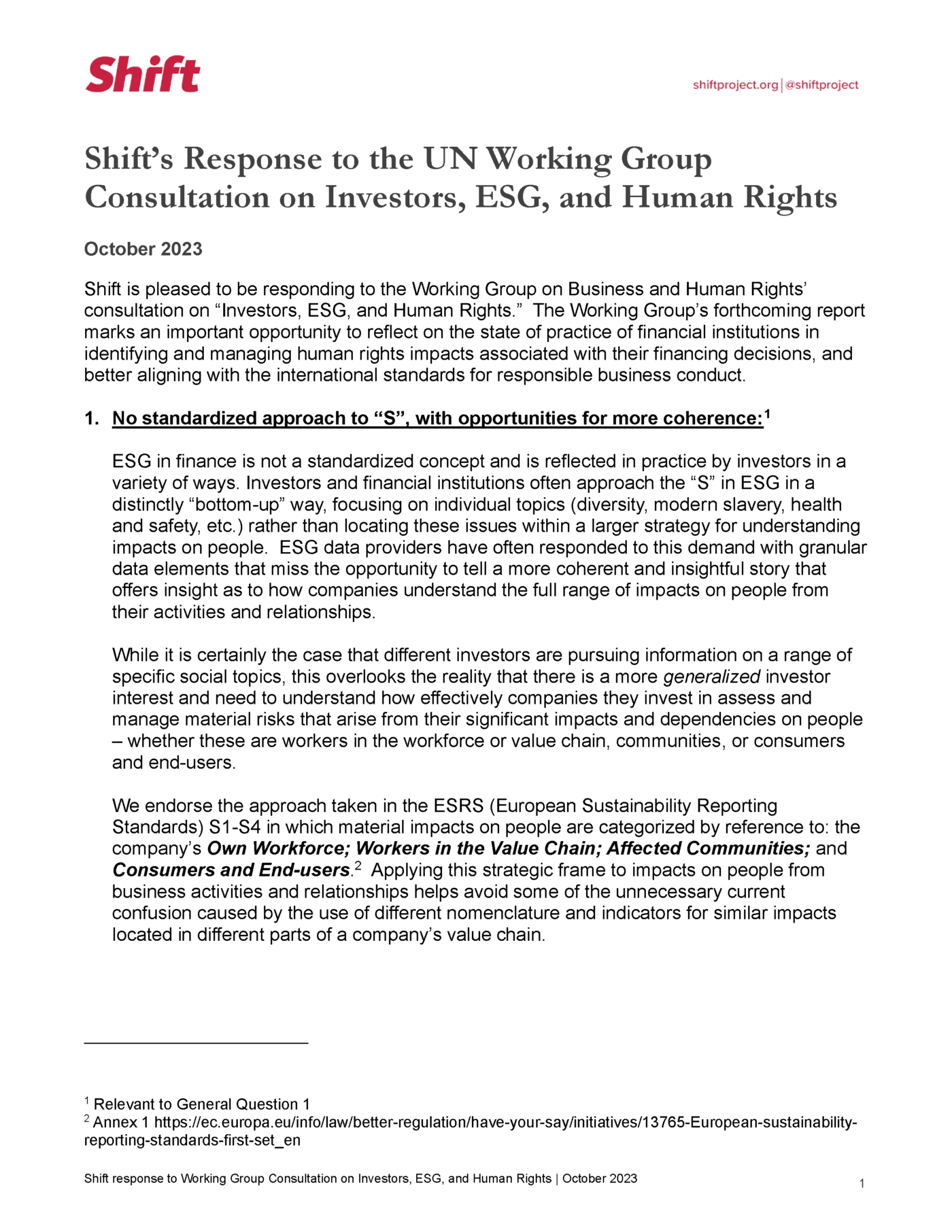Investors and lenders are responding to financial incentives and external pressure to better consider human rights impacts connected to their investment and financing activities. These impacts are at the core of a company’s social performance or the “S” in ESG. However, despite increasing internal support for more explicit consideration of social performance, existing “S” data skews heavily towards well-known industry and geographic risk profiles and “observable basics” in the form of documented policies and processes, or numbers of audits, issues found, grievances or media stories about a company.
At best these types of information signal minimal compliance with aspects of international standards of business conduct, well-known reporting frameworks and recent legal developments. But they offer little insight into whether a company has made or will make progress towards achieving improvements in its business practices and the resulting outcomes for workers, communities, and consumers. At worst, conclusions drawn from some of the “S” data can mislead financial institutions to allocate money and attention to the most talked about companies, versus those that bring the highest exposure to financial institutions due to the severity of risks to people and business.
For three years, as part of our Valuing Respect Project, Shift worked with companies, investors, and civil society organizations around the world to research and co-create improved ways to evaluate business respect for human rights. The resulting, publicly available products can be used by investors and lenders in:
- Focusing their screening and engagement activities on whether portfolio companies are wired – at the level of their business model, strategy, and culture – to anticipate and address the most severe risks to people connected to their operations and value chain.
- Designing and measuring the impact of strategies that aim to effect changes in the behavior of investees and clients so as to achieve better outcomes for people and business.
This series provides an overview of the indicators and tools developed, and how investors and lenders are beginning to draw from them to facilitate and strengthen their work.
These tools were produced as part of a multi-year program of expert support to the Finnish Government, focused on integrating the UNGPs into the activities of the main state agencies and programs supporting Finnish private sector investment abroad. This work is summarized in the final program report.
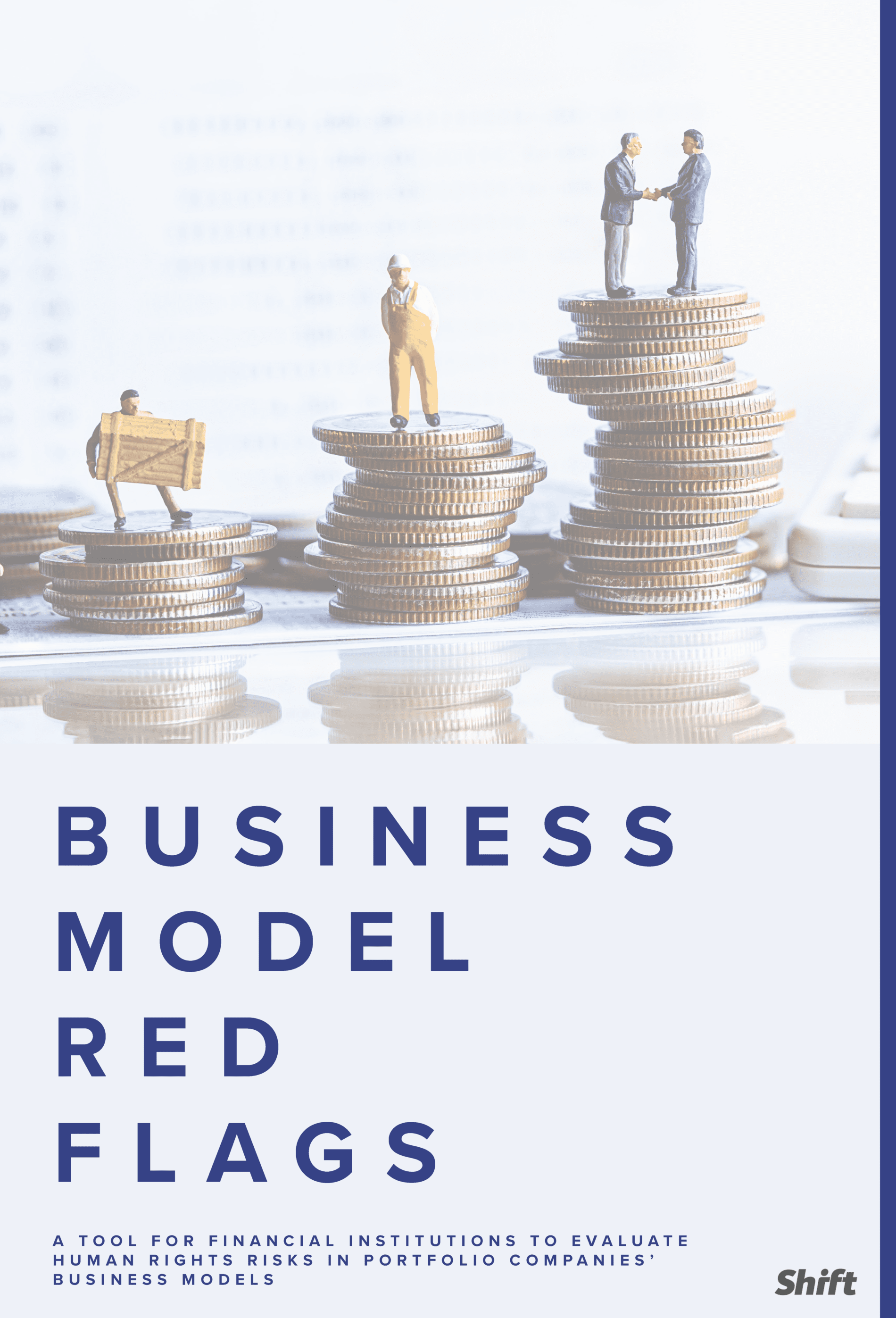
Business Model Red Flags
Investors and lenders may be missing a key source of risk in their portfolios, as well as the opportunity for more sophisticated and effective engagement, if they fail to consider how a company’s business model can lead to negative impacts on human rights.
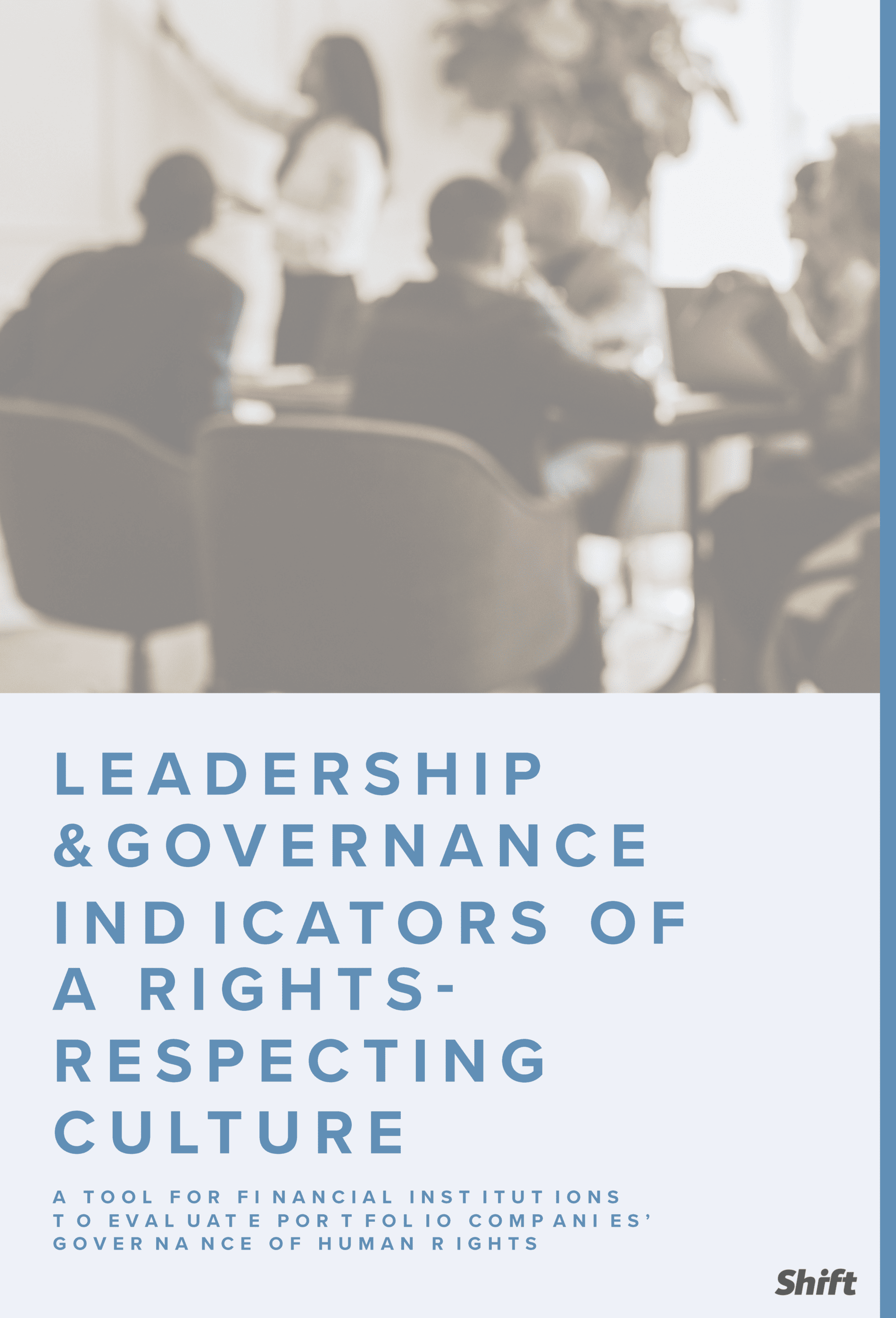
Leadership and Governance Indicators of a Rights Respecting Culture
Lenders and investors that can identify the appropriate leadership and governance characteristics that drive a rights-respecting culture, can better understand and influence the extent to which their portfolio companies think and act about impacts on people. This resource offers an introduction to Shift’s Leadership and Governance Indicators.

Indicator Design Tool – a tool for Financial Institutions
The Indicator Design Tool provides financial institutions with a structured way to design and measure their efforts to use leverage with portfolio companies. At the core of the tool is an approach known as Theory of Change thinking: a well-established practice for designing, monitoring and evaluating interventions.
